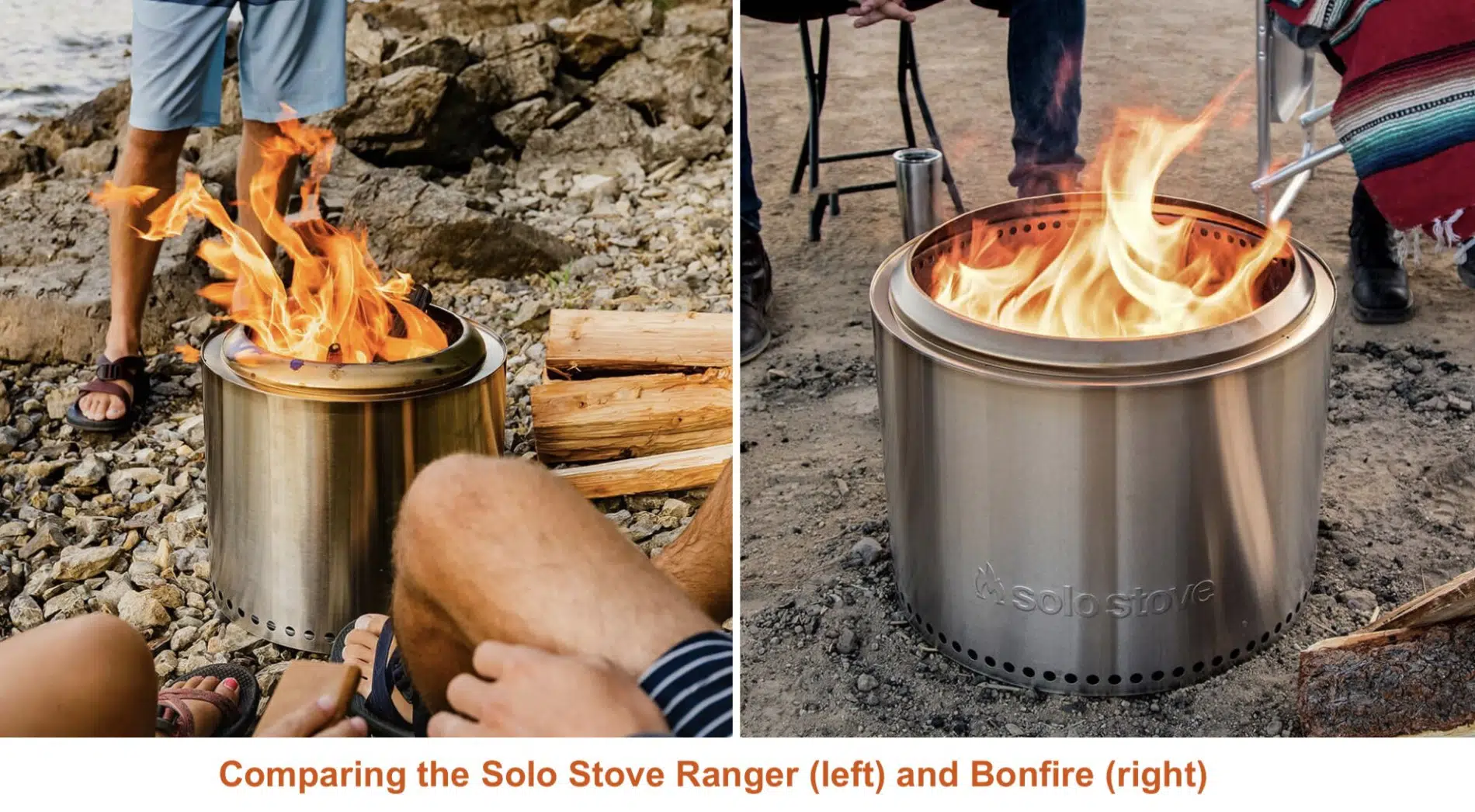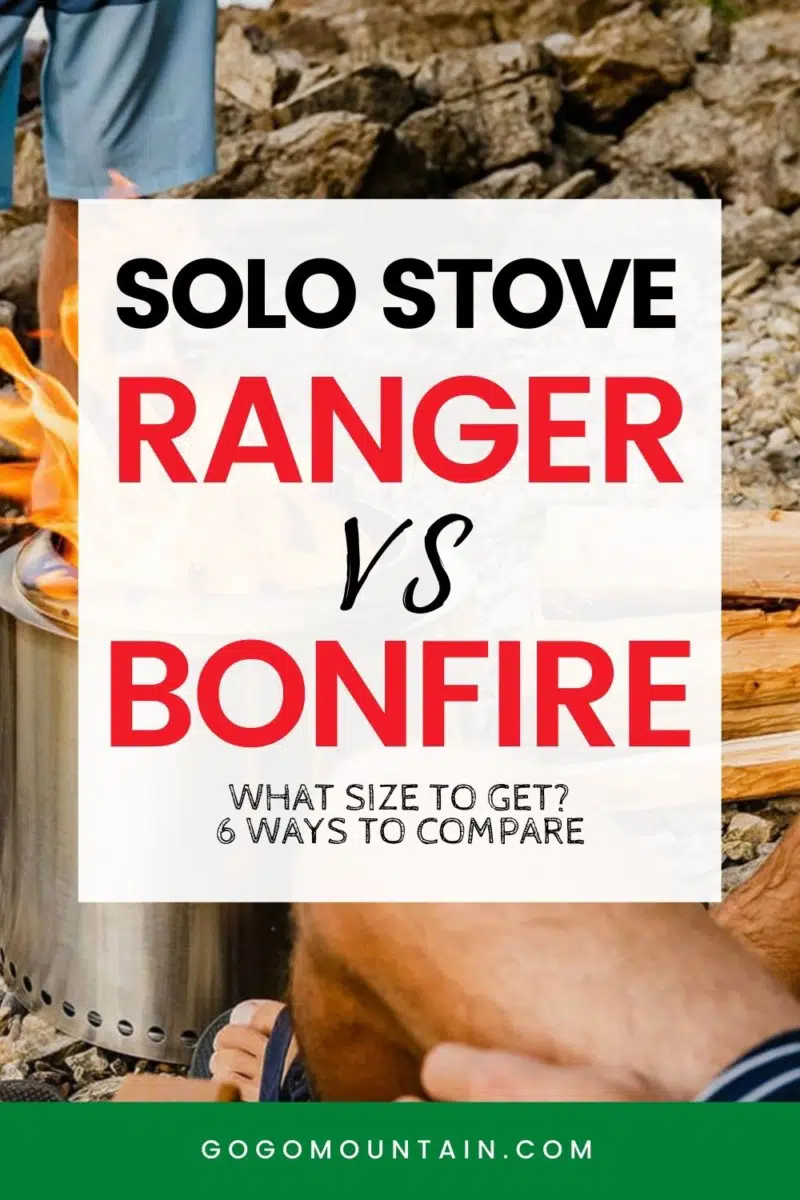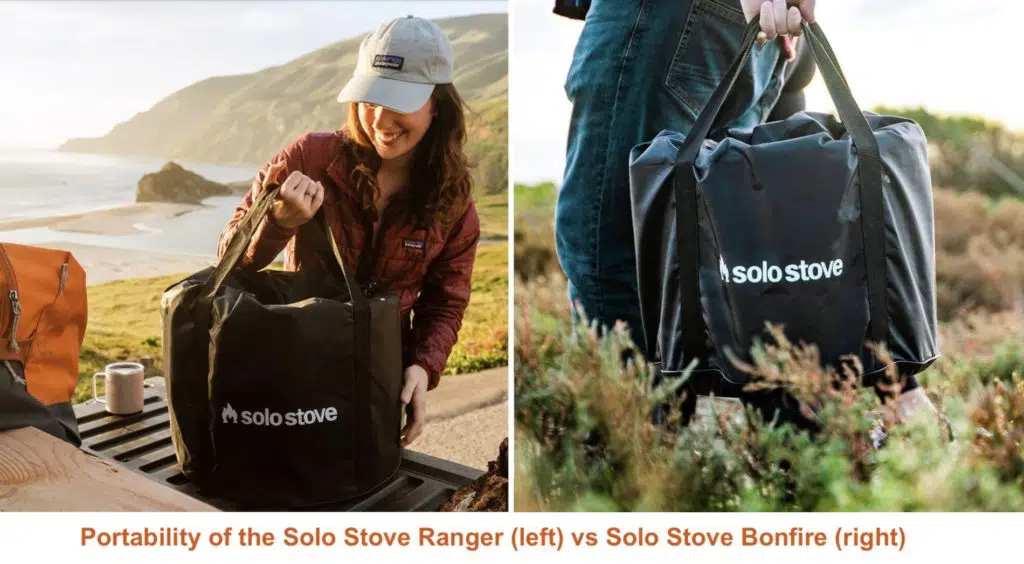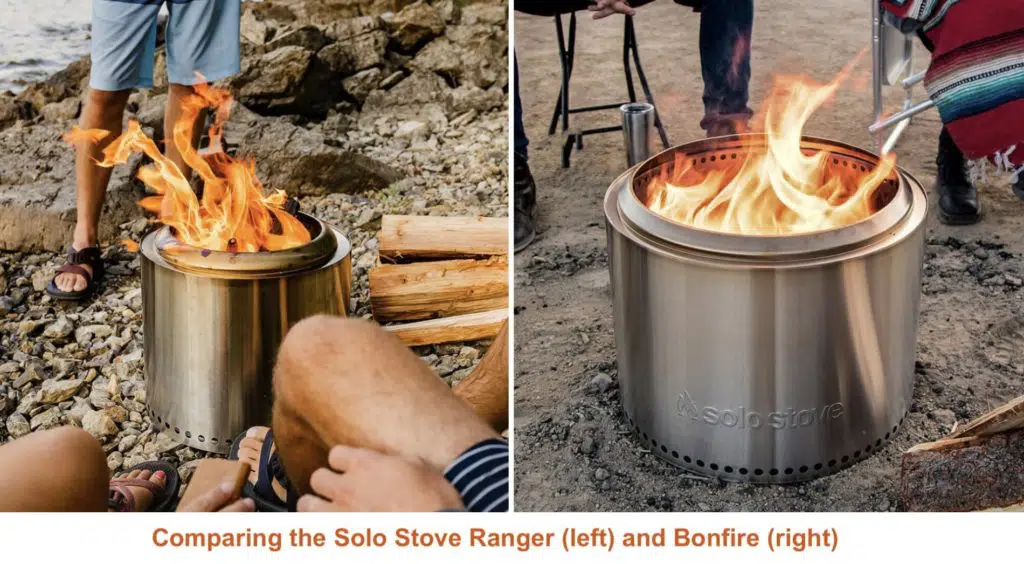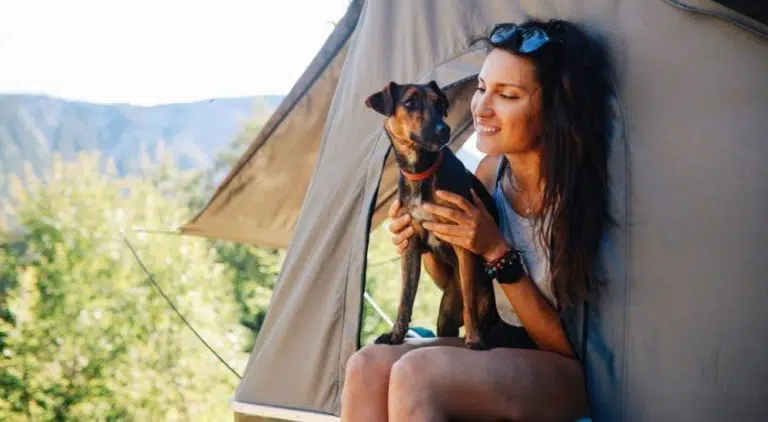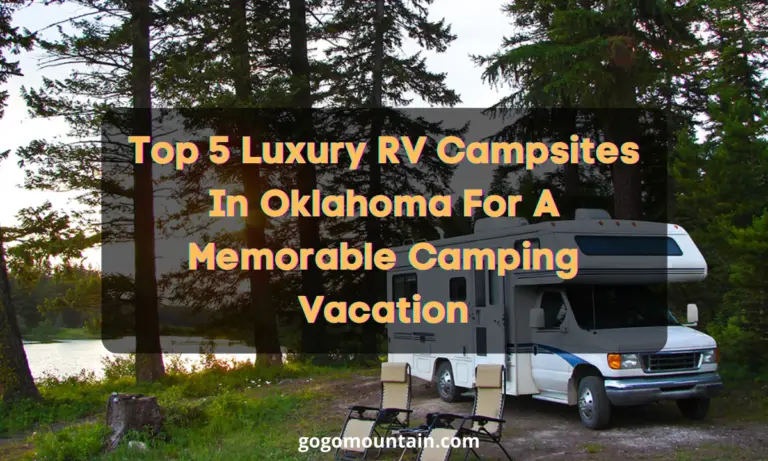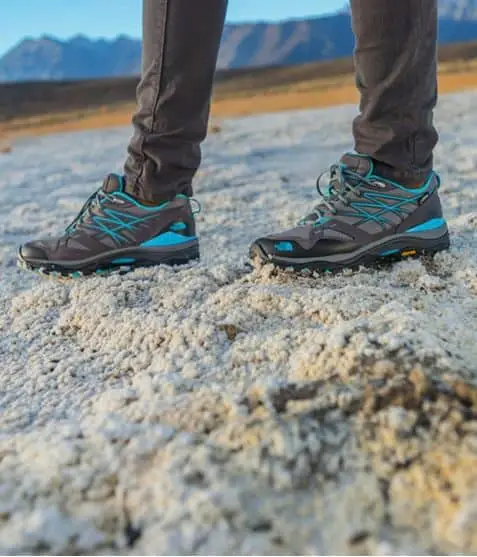Solo Stove Ranger vs Bonfire – 6 Ways To Choose The Best For You
The Solo Stove Ranger vs Bonfire debate is settled in size and warmth. Solo Stove’s Bonfire is a larger portable fire pit, but the Solo Stove Ranger fire pit is easier to travel with. Both are made with the same high-quality steel backed by a lifetime warranty.
The main difference between the Solo Stove Ranger and Bonfire is their size. Solo Stove’s Bonfire measures 19.5 inches in diameter and 14 inches in height. The smaller Ranger fire pit measures 15 inches in diameter and 12.5 inches in height.

The ideal users for Ranger and Bonfire Solo Stove fire pits are different. The Solo Stove Bonfire is ideal for large families, while its smaller Ranger alternative is perfect for camping and small urban gardens.
Materials, design, and durability are similar on both Ranger and Bonfire. Solo Stove’s portable fire pits are made from stainless steel. But their biggest quality is an almost smokeless fire. This separates them from other fire pits that normally make guests smell like burnt wood.
Is Solo Stove Worth it?
Before our the detailed comparison, you’ll find that the Solo Stove is innovative. It’s one of the first portable fire pits with a low smoke burn. That makes it ideal for home and camping use.
While different in size, Solo Stove Range and Solo Stove Bonfire both use a double-wall design with a cool air intake that feeds the fire at the top, essentially leading to better wood burn. The design efficiency of the fire pits also means wood burns thoroughly with less ash to worry about at the cleaning stages.
Solo Stove Ranger vs Bonfire – A Detailed Comparison
The size and usability of the Solo Stove Ranger are different from the Bonfire fire pit. Smaller and ideal for singles or couples, Ranger is lighter and ideal for lightweight camping gear fans. Here are other main differences between Ranger and Bonfire Solo Stove fire pits.
1. Size
Solo Stove Ranger is 4.5” smaller in diameter than Solo Stove Bonfire. It’s also 1.5” shorter than Solo Stove Bonfire. This makes it a bit more practical. It is also only efficient at heating a smaller area around the fire pit.
Solo Stove Ranger’s Diameter
15”
Height
12.5”
Solo Stove Bonfire’s Diameter
19.5”
Height
14”
2. Fuel
Both Ranger and Bonfire fire pits are designed for wood logs. Ranger requires smaller logs, while Bonfire can take standard 16” wood logs.
Solo Stove Ranger’s Logs
You can fit up to 12” logs, between 4 to 6 at a time
Solo Stove Bonfire’s Logs
You can fit up to 16” logs, between 4 to 6 at a time
3. Materials
304 stainless steel is used in both fire pits. This type of steel is known for its high-temperature resistance.
304 stainless steel also has good corrosion resistance, but most users don’t recommend leaving either the Ranger or the Bonfire out in the rain to maintain the steel’s new look as long as possible.
4. Warmth
The Solo Stove Bonfire is estimated to be warmer than the smaller Ranger. Most users note it heats an area of up to 4 feet away, making it ideal for small groups, garden get-togethers, and camp marshmallow events.
5. Weight
Bonfire is 5lbs heavier than Ranger fire pit. This recommends it more for home use than for camping use, where lightweight, portable fire pits are ideal. However, for bigger parties and warmth, you can still take your Bonfire with you.
The lower weight of the Ranger doesn’t negatively impact its performance. It still burns wood efficiently, and it does it without much smoke.
6. Flame
The flame of the Solo Stove Ranger is smaller than the flame of the Bonfire Solo Stove. This is due to its reduced diameter and height. However, both flames look the same.
While it looks like both fire pits have one flame only, these burn with 2 combined flames. The main flame comes from the logs, while the secondary flame is drawn from the cold air that is released as hot air at the top of the fire pit as heated oxygen that ignites when meeting the main flame.
Here’s How Solo Stove Ranger and Bonfire are Similar
Solo Stove makes a large and a smaller portable fire stove that burns without smoke. The Bonfire portable stove is larger and suitable for heating a group of people. Its smaller Ranger alternative is ideal for heating 1-2 people.


Gas-free fire
Solo Stove’s portable fire pits use wood as fuel. Dry and wet wood can be used to make a fire, given these fire pits have better air circulation than their alternatives.
Both the larger and the smaller Solo Stove fire pits don’t rely on gas. This means users have the ultimate fuel freedom when camping in the wilderness.
Beautiful design
Solo Stove Range and Bonfire share the same elegant design. These stainless steel fire pits are made of 3 parts (base, body, and top ring). Since the base raises the 2 fire pits, they can be used on wooden surfaces such as patios.
Smoke-free fire
One of the biggest similarities between Ranger and Bonfire is the smoke-free fire. This is what allows users to enjoy a fire longer without having clothes that smell of smoke.
FAQ About the Solo Stove Ranger vs Bonfire
Which is the best Solo Stove to buy?
Solo Stove Bonfire is the best choice for home use and as a mobile fire pit. It replaces in-ground fire pits, which take up space and which create a lot of smoke. This recommends it for urban gardens where reduced fire pit smoke levels don’t affect the neighbors.
Are Solo Stoves worth it?
Yes, Solo Stoves are worth it since they are made with a patented design. This means no other stove can be made with a similar double-wall low-smoke design. These fire pits are also known for their low ash production due to their high wood-burning efficiency.
Why don’t Solo Stove Ranger and Bonfire not smoke?
Solo Stove fire pits take up cold air from the bottom, turning it into warm air through the double walls. The warm air ignites when released at the top of the fire stove. Both fire pits are efficient at burning wood and allowing people to stand around them without worrying about wind direction, smoke, and sitting position around the fire.
Can I use charcoal in a Solo Stove?
Charcoal is normally used in combination with wood logs in a Solo Stove fire pit. The charcoal is placed at the bottom, where it ignites the fire, essentially burning all types of logs.
Can you cook on the Solo Stove Ranger and Bonfire?
Theoretically, you can cook on both the Ranger and the Bonfire Solo Stoves. However, this typically creates a larger mess and it requires considerable more cleanup time than simply removing a small amount of ash.
A grill accessory is available for both Sole Stove Ranger and Bonfire. Made from cast iron, the grill can be used for meats and vegetables. However, it adds weight to the portable fire pits as the Solo Stove grill accessory weighs 15lbs for the Ranger and 20lbs for the Bonfire.
Conclusion
Solo Stove Ranger is smaller (8.83 cubic inches) than the Solo Stove Bonfire (16 cu. in.) but retains the same qualities, such as low-smoke fire and a great-looking flame. Similarly priced, these can be used at home or while camping, with Ranger being the best choice for camping or hiking while Bonfire being the superior choice for beautiful smoke-free portable fire pit for home use.
Review: Solo Stove Bonfire vs Yukon – The Heavy Weight of Fire Pits?
5 BEST Camping Stoves for Families
How to Start a Fire in a Fire Pit – Without a Stove!

